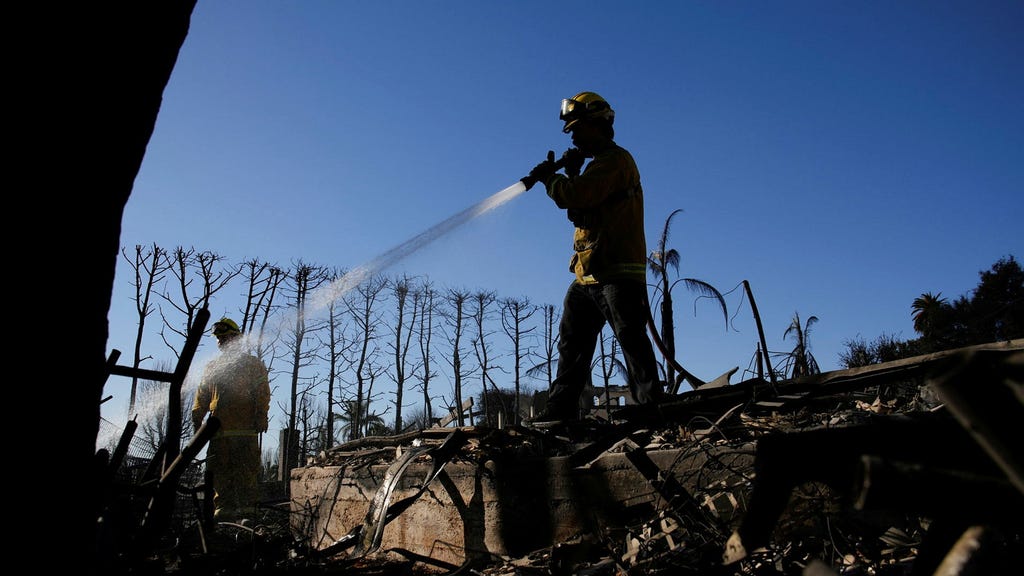The escalating winds in California pose a significant threat to ongoing wildfire containment efforts, with predictions indicating a worsening situation in the coming days. Firefighters are bracing for intensified fire behavior, including rapid spread, increased ember cast, and the potential for new ignitions. These stronger winds can carry embers miles ahead of the main fire front, starting spot fires in dry vegetation and expanding the fire perimeter dramatically, making containment extremely challenging. The increased wind speeds also create turbulence, making it more difficult and dangerous for aerial firefighting operations, potentially grounding aircraft and limiting their crucial support in water and retardant drops. Authorities are deeply concerned about the ”particularly dangerous” conditions and the potential for rapid escalation, urging residents to remain vigilant and prepare for possible evacuation orders.
The heightened risk underscores the critical need for proactive community preparedness. Residents in fire-prone areas should assemble essential supplies, including medications, important documents, and emergency provisions. Creating defensible space around homes by clearing brush and debris is crucial in reducing the risk of property damage. Establishing and practicing evacuation plans with family members, including identifying designated meeting points and communication strategies, ensures a swift and organized response if an evacuation order is issued. Staying informed about fire conditions and heeding official warnings is paramount for community safety. Local authorities are utilizing various platforms to disseminate critical information, including emergency alerts, social media updates, and community meetings, ensuring residents have access to real-time updates and guidance.
The predicted wind conditions are exacerbating an already challenging fire season in California. Prolonged drought and record-high temperatures have created tinderbox conditions across the state, leaving vegetation extremely dry and susceptible to ignition. The combination of dry fuels, low humidity, and strong winds creates the perfect storm for rapid fire spread and extreme fire behavior. These increasingly frequent and intense wildfires are placing a significant strain on firefighting resources, requiring mutual aid agreements and the deployment of personnel and equipment from across the state and even from other regions. The strain on resources also extends to emergency shelters and community support systems, highlighting the need for comprehensive disaster preparedness plans at all levels.
The situation is further complicated by the topography of the affected areas. Steep terrain and dense vegetation create difficult access for firefighters, hindering ground operations and making containment lines harder to establish and maintain. In such challenging environments, aerial resources become even more crucial for suppressing the flames and slowing the fire’s advance. However, the anticipated strong winds can significantly limit or even completely prohibit the use of aircraft, further complicating firefighting efforts and increasing the risk of the fire escaping containment lines. This dynamic interplay between weather conditions, terrain, and fuel availability reinforces the need for adaptive firefighting strategies and the importance of early detection and rapid response.
The escalating fire danger highlights the broader implications of climate change and the increasing frequency and intensity of extreme weather events. California has experienced a trend of warmer temperatures, drier conditions, and longer fire seasons, contributing to the severity of recent wildfires. These changes underscore the urgent need for mitigation and adaptation strategies, including forest management practices that reduce fuel loads, investments in fire-resistant infrastructure, and community-based preparedness programs. Addressing the root causes of climate change through reductions in greenhouse gas emissions is critical to mitigating the long-term risks of increasingly destructive wildfires. Furthermore, enhancing early warning systems and improving community resilience will be essential in adapting to the changing fire landscape and protecting lives and property.
The current situation in California serves as a stark reminder of the destructive power of wildfires and the importance of preparedness. Residents in fire-prone areas must remain vigilant, stay informed about fire conditions, and heed evacuation orders promptly. The combined efforts of firefighters, emergency management agencies, and community members are crucial in mitigating the impact of these devastating events. As climate change continues to exacerbate fire risks, proactive measures, including fuel management, fire-resistant construction, and community education, will become increasingly vital in safeguarding communities from the escalating threat of wildfires. Collaboration among stakeholders, scientific advancements in fire prediction and modeling, and ongoing investments in firefighting resources and technologies will be essential in confronting the ongoing challenges of wildfire management in a changing climate.














